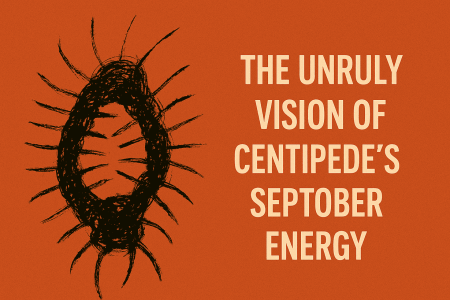Septober Energy is not your average jazz-rock album. It’s a cult classic that pushed the limits of what a large ensemble could do in the early 1970s. Created by the short-lived supergroup Centipede, the project brought together over fifty musicians from across the British jazz and progressive rock scenes.
At a time when genres were blending in bold new ways, Septober Energy stood out for its ambition and scale. It mixed improvisation with tightly written sections, creating something that felt chaotic yet strangely focused. While it never found a wide audience, the album became a touchstone for fans of experimental music and remains a fascinating snapshot of a unique moment in British music history.
The Genesis of Centipede
Centipede was the brainchild of British pianist and composer Keith Tippett. Known for his fearless approach to improvisation, Tippett had already made waves in the UK jazz scene with his own sextet. But by the end of the 1960s, he wanted something bigger—a group that could bring together the creative energy bubbling across jazz, rock, and experimental music.
This idea took shape during a time of major crossover in British music. The jazz scene was shifting, breaking away from American traditions and heading toward more open, often abstract territory. Musicians were starting to think less in genres and more in possibilities.
Tippett was deeply connected to this movement. He had worked with King Crimson on their early albums, and many of his peers were active in the same progressive circles. Members of Soft Machine, Nucleus, and other groups tied to the Canterbury scene were all part of this growing network. Centipede became a way to bring that entire world into one massive ensemble—less a band, more a collective vision brought to life.
Building the Beast
Bringing together more than fifty musicians was no small feat. Keith Tippett’s vision for Centipede wasn’t just ambitious—it was nearly unmanageable by design. The lineup included players from all corners of the British avant-garde. There were jazz improvisers, rock veterans, classical musicians, and free spirits all under one roof.
Notable names jumped in: Robert Wyatt brought his distinct rhythmic sense from Soft Machine. Ian McDonald, fresh off his work with King Crimson, added weight with his multi-instrumental chops. Julie Tippetts (formerly Driscoll) brought a powerful vocal presence that cut through the dense textures. Add in members of Nucleus, Blossom Toes, and the Keith Tippett Group, and the result was a swirling ecosystem of sound.
Rehearsals were more like experiments than strict practice sessions. There was structure, but Tippett left space for the unknown. Collaboration wasn’t just encouraged—it was the foundation. Still, with that many players, chaos was always close. What held it together was a shared sense of curiosity. Everyone knew this wasn’t going to be a polished pop record. It was going to be something wilder, something alive.
Inside Septober Energy

The album is made up of four long movements, each stretching well beyond typical song structure. Rather than following a linear path, the music unfolds in waves. Themes are introduced, pulled apart, and reassembled. It’s less about destination and more about journey.
Keith Tippett’s writing blurs the line between composition and improvisation. You can hear echoes of jazz phrasing, classical dynamics, and free improvisation all sharing the same space. At times, the music sounds like it’s about to fall apart. Other times, it locks into moments of surprising clarity.
One standout comes early in Septober Energy – Part 1, where choral voices rise over layered horns and strings. It feels ceremonial, almost like a call to attention. Later, in Part 2, the ensemble drops into looser territory. The rhythm section opens up, giving soloists space to stretch and push boundaries. By the time you reach Part 4, there’s a sense of return. The motifs echo earlier ideas, but they’ve been changed by everything in between.
This structure gives the album a unique tension. It’s both sprawling and purposeful, chaotic and composed. Tippett wasn’t trying to control the music—he was guiding it.
Fripp’s Fingerprint
Robert Fripp wasn’t just a producer on Septober Energy—he was a steady hand on a ship that could have easily drifted off course. Known for his precision and control in King Crimson, Fripp approached this sprawling project with patience and discipline. His role was less about shaping the material and more about capturing its essence.
Fripp let Tippett lead creatively, but he made key decisions that shaped how the album sounded. He helped frame the chaos without diluting it. The recording doesn’t feel overproduced, but it also never collapses under its own weight. That balance is where Fripp’s influence shows.
The collaboration worked because their visions didn’t clash. Tippett wanted freedom; Fripp understood how to record it. Their aesthetics—one rooted in open exploration, the other in sonic clarity—ended up complementing each other. Fripp brought a sense of scale without sanding down the rough edges.
The Legacy of Septober Energy
Septober Energy doesn’t sit neatly in any one genre, which is part of what makes it so enduring. It stands at the outer edge of both progressive rock and avant-garde jazz, bridging scenes that often ran parallel but rarely collided at this scale. For listeners willing to take the trip, the album remains a singular experience—messy, grand, and unapologetically bold.
Its influence can be heard in later large-scale experimental collectives. Groups like the London Improvisers Orchestra or even post-rock ensembles such as Godspeed You! Black Emperor followed in its footsteps, blending composition with improvisation and using size as a creative tool rather than a gimmick.
As for Centipede’s members, they didn’t stay still. Many returned to their core projects, while others kept pushing boundaries in jazz, rock, and experimental music. Keith Tippett continued leading ambitious ensembles. Robert Wyatt evolved into a cult figure. Julie Tippetts, Ian McDonald, and others left their own lasting marks across different scenes. Centipede was never meant to last, but that wasn’t the point. The impact was in the moment—and in what it made possible after.
